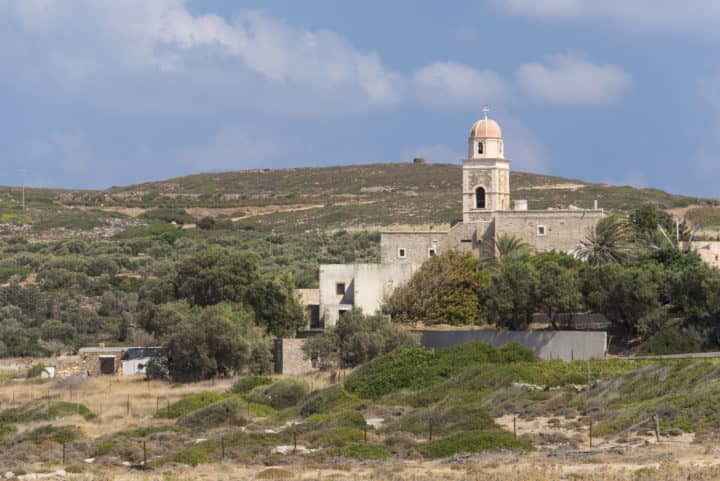 Lassithi, on the island of Crete, is still mostly untouched by mass tourism. It is a region that boasts rich natural beauty and impressive history. The monasteries of Lassithi, Greece are brimming with history and beauty. Here are some of the monasteries you can explore when visiting Lassithi.
Lassithi, on the island of Crete, is still mostly untouched by mass tourism. It is a region that boasts rich natural beauty and impressive history. The monasteries of Lassithi, Greece are brimming with history and beauty. Here are some of the monasteries you can explore when visiting Lassithi.
Monastery of Toplou
The 15th century Monastery of Toplou is located in the Lassithi region of Crete. It is close to the Vai Palm Forest. Sadly, the Monastery of Toplou was destroyed during the earthquake of 1612. It was reconstructed by the Venetians, but would be destroyed yet again during the Ottoman occupation. The name Toplou came about during Turkish rule and has been attributed to the Turkish word top, which means “cannon-ball” or “bullet.” This refers to the cannons that were added to the monastery by the Venetians.
The Monastery of Toplou would continue to develop and gained stravropegiac status. During World War II when the Germans occupied, guerilla fighters and monks who were hiding at the monastery were executed. The Monastery of Toplou is a fortified monastery with 10 meter high walls and a main gate that is equipped with a hidden area for monks to pour lead or hot oil onto intruders. When you visit the Monastery of Toplou, you can admire the northern aisle at the Catholic section, which is part of the original monastery adorned with beautiful frescoes.
Monastery of Panagia Kroustallenia
Built on a hill near the Village of Agios Konstantinos in the plateau of Lassithi, the Monastery of Panagia Kroustallenia is one of the most historical monasteries on the island of Crete. The monastery was founded in 1241, but it is thought to have been built between 961 ans 1204. Tradition says that the name of the monastery is derived from the icon of Virgin Mary that was found in a cave nearby.
The icon was carved in crystal. During Ottoman rule, much of the Monastery of Panagia Kroustallenia was destroyed, so the complex consists of building from the 20th century. In 1272, the monastery was the site of rebel meetings against the Venetians. Twenty years later, the Venetians evacuated the Lassithi Plateau and the Monastery of Panagia Kroustallenia was destroyed.
Monastery of Kapsa
Located 40 km from the town of Sitia, the Monastery of Kapsa built against steep grey-red rocks that overlook the Libyan Sea. The Monastery of Kapsa is though to have been founded during the 15th century, but the exact date is unknown. Until 1841, the Monastery of Kapsa was just a small chapel that was dedicated to Saint John the Baptist along with a few cells. The monastery was destroyed by the Ottomans, but has since been renovated.
The courtyard and the lobby of the monastery are both decorated with stone mosaics in the ground. There are beautifully carved icons and replicas of John the Baptists, Basil the Great, Modesto, and others. An important part of the Monastery of Kapsa is the cave where Joseph Gerontogiannis lived for 17 years.
Monasteries are a big part of the history and culture of Greece. You’ll want to visit some of them while spending time in Lasithi.

